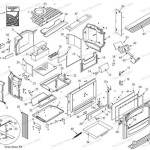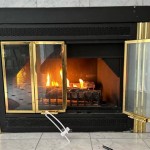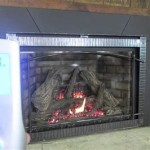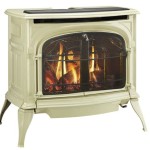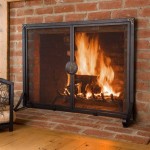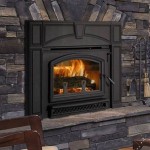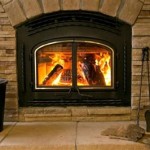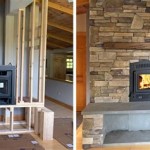Understanding Ethanol Gas Fireplaces: A Comprehensive Guide
Ethanol gas fireplaces, also known as bioethanol fireplaces, represent a modern alternative to traditional wood-burning or gas fireplaces. They offer a clean-burning, ventless solution for adding ambiance and supplemental heat to a variety of spaces. This article aims to provide a detailed understanding of ethanol gas fireplaces, covering their mechanics, benefits, drawbacks, and safety considerations.
The popularity of ethanol gas fireplaces stems from their ease of installation and use. Unlike conventional fireplaces, they do not require a chimney, gas line, or electrical connection for operation. This ventless design allows for installation in apartments, condominiums, and rooms where traditional fireplaces are not feasible. The fuel used in these fireplaces is typically denatured ethanol, a renewable alcohol derived from corn, sugarcane, or other biomass sources. This biofuel burns cleanly, producing minimal smoke, soot, or ash.
The core component of an ethanol gas fireplace is the burner, which houses the liquid fuel. These burners come in various sizes and designs, affecting the flame size, heat output, and burn time. Some models feature adjustable flame controls, allowing users to regulate the heat and aesthetic appeal. The fuel is ignited using a long lighter or a built-in ignition system, and the flame burns until the fuel is exhausted.
Key Advantages of Ethanol Gas Fireplaces
Ethanol gas fireplaces offer several distinct advantages over traditional fireplace options. These benefits contribute to their increasing appeal among homeowners and renters alike.
First and foremost, the ventless design is a significant advantage. The absence of a chimney simplifies installation and eliminates the need for costly ductwork. This flexibility allows for a variety of installation options, including freestanding units, wall-mounted models, and tabletop designs. The lack of venting also means that the heat generated by the fireplace remains in the room, rather than being lost up a chimney. This makes ethanol fireplaces a more efficient source of supplemental heat compared to vented fireplaces.
Another key benefit is the clean-burning nature of ethanol fuel. When ethanol burns, it produces primarily carbon dioxide and water vapor, in similar quantities to that produced by burning candles. This contrasts sharply with wood-burning fireplaces, which release smoke, soot, and harmful pollutants into the air. The absence of these byproducts contributes to a cleaner indoor environment and reduces the risk of respiratory irritation. Furthermore, the lack of ash eliminates the need for frequent cleaning and maintenance.
The aesthetic appeal of ethanol gas fireplaces is also a significant factor in their popularity. The clean, modern design of these fireplaces complements a wide range of interior styles. The dancing flames create a warm and inviting ambiance, enhancing the visual appeal of any room. Many models offer customizable features, such as decorative logs, stones, or glass beads, allowing users to personalize the look of their fireplace.
Disadvantages and Limitations
While ethanol gas fireplaces offer numerous advantages, it's important to acknowledge their limitations. Understanding these drawbacks is crucial for making an informed decision about whether an ethanol fireplace is the right choice.
One primary disadvantage is the cost of fuel. Ethanol fuel is typically more expensive than natural gas or propane, the fuels used in conventional gas fireplaces. The ongoing cost of refueling can be a significant factor, especially for users who plan to use their fireplace frequently. Prices of ethanol fuel can also fluctuate depending on the supplier and market conditions.
Another limitation is the heat output. While ethanol gas fireplaces can provide supplemental heat, they are generally not powerful enough to heat an entire house or even a large room. The BTU output of an ethanol fireplace is typically lower than that of a traditional fireplace, making it more suitable for smaller spaces or for creating ambiance rather than primary heating.
The burn time of an ethanol gas fireplace is also limited by the fuel capacity of the burner. Depending on the model and flame setting, a single filling of fuel may only last for a few hours. This requires frequent refueling, which can be inconvenient for some users. Furthermore, it's crucial to allow the burner to cool down completely before refueling to prevent accidents.
Safety Considerations for Ethanol Gas Fireplaces
Safety is paramount when operating any type of fireplace, and ethanol gas fireplaces are no exception. Adhering to safety guidelines is crucial for preventing accidents and ensuring a safe and enjoyable experience.
First and foremost, it's essential to use only fuel specifically designed for ethanol gas fireplaces. Using other types of fuel can be dangerous and may result in improper burning, excessive smoke, or even explosions. Always follow the manufacturer's instructions regarding the type of fuel to use and the proper refueling procedures.
Proper ventilation is also critical, even though ethanol fireplaces are ventless. While the emissions from burning ethanol are relatively clean, they still produce carbon dioxide. Ensure adequate ventilation in the room to prevent the buildup of carbon dioxide, which can lead to headaches, dizziness, or even more serious health problems. Opening a window or door can provide sufficient ventilation.
Never leave an ethanol gas fireplace unattended while it is burning. It's important to monitor the flame and ensure that it is burning properly. Keep flammable materials, such as curtains, furniture, and paper, away from the fireplace to prevent fires. Supervise children and pets closely when the fireplace is in use to prevent accidental burns.
Refueling an ethanol gas fireplace requires caution. Always allow the burner to cool down completely before adding more fuel. Spilling fuel can create a fire hazard, so use a funnel to pour the fuel carefully into the burner. Wipe up any spills immediately with a damp cloth. Never add fuel to a burning or hot burner, as this can cause a flash fire.
It is also important to have a fire extinguisher nearby in case of an emergency. Familiarize yourself with the operation of the fire extinguisher and know how to use it properly. Regularly inspect the fireplace for any signs of damage or wear, and have it serviced by a qualified technician if necessary.
Finally, consider installing a carbon monoxide detector in the room where the ethanol gas fireplace is located. While ethanol fireplaces produce minimal carbon monoxide, a detector can provide an extra layer of safety and alert you to any potential problems. Test the carbon monoxide detector regularly to ensure that it is functioning properly.
By understanding the mechanics, benefits, drawbacks, and safety considerations of ethanol gas fireplaces, individuals can make informed decisions about their suitability for specific needs and environments. Proper usage and adherence to safety guidelines are crucial for enjoying the ambiance and supplemental heat that these fireplaces offer.

What Is An Ethanol Fireplace The Complete Guide To Bio Fireplaces Modern Blaze

Ethanol Fires Wood And Gas Fireplaces Cheminee Stones Lebanon
:max_bytes(150000):strip_icc()/Ethanol-Fireplace-via-smallspaces.about.com-56a889795f9b58b7d0f3278c.jpg?strip=all)
Using An Ethanol Fireplace In A Small Home

Environmentally Friendly Fireplaces With Ethanol And Isopropyl

Recommended Room Size For Bio Fire Buy Them Here

The Pros Cons Of Ethanol Fireplaces

Should You Have An Ethanol Fireplace In Your Space

Bio Ethanol Fires The Perfect Design Solution Blog

Are Ethanol Fireplaces Worth It Biofuel Blog Ignis

Hastings Home 14 In X 7 25 Ethanol Fuel Fireplace The Gel Fireplaces Department At Com
Related Posts

